
政治与国际关系研究,人文社科写作。 Twitter:https://twitter.com/22HomoPoliticus Substack中英双语专栏:https://substack.com/@ignatiusdhlee?utm_source=user-menu
China Issues | Blank Paper Revolution——Where does the decentralized social movement go?
The "anti-extradition movement" in Hong Kong in 2019 set a new example for global social movements. However, the "decentralization movement" that draws on the "anti-extradition movement" model is in danger of being frustrated again in China today. This can’t help but make people reflect, are “decentralized” social movements really effective in fighting against new authoritarianism, or even totalitarian regimes? Another question that is rarely asked is: under what circumstances does it work?
The ongoing anti-government demonstrations in Iran have quietly opened up another new model of social movement. This new model is unexplored virgin territory, both for participants in the "white paper revolution" and for observers of Chinese politics. In addition, there have been no systematic reflections on the "white paper movement" so far.
This article will first briefly analyze the new characteristics of the large-scale anti-government demonstrations in Iran in 2022, and then reflect on the problems existing in the "blank paper revolution" that occurred in China in light of the "Iranian model" that emerged in social movements. In-depth reflection on the circumstances under which "decentralized social movements" may be effective.

Iran's massive anti-government demonstrations in 2022
According to IranWire commentary and Al Jazeera reports, the large-scale anti-government demonstrations in Iran triggered by the death of Mahsa Amini this year have taken on a series of new characteristics that are different from previous ones.
Around 2020, a poll in Iran showed that 74% of the Iranian people are equally dissatisfied with the reformers and conservatives in Iran, which means that the Iranian people have fundamentally shaken their confidence in the existing political system and even in the "Islamic Republic of Iran".
The current anti-government demonstrations have also issued sharp attacks on reformers and conservatives in Iran. In this "movement for decentralization", reformist politicians and other political groups have been discredited: either silent or have no influence on the demonstration movement. In the past, these political groups were often the initiators and organizers of demonstration movements.
Secondly, the current anti-government demonstrations in Iran are not only nationwide, they are not gathered in the main blocks or streets like previous demonstrations, but are scattered in various places in every city, which seriously increases the difficulty of suppression.
Thirdly, regardless of the new generation or the older generation, Iranians have continued their campaign calls and political appeals for more than 40 years, demanding the realization of social freedom, political freedom, opposition to compulsory wearing of higab (hijab), opposition to dictatorship and autocracy, etc. Clearly, the political demands of the Iranians go far beyond those against the Higab and the morality police.

Iranians played the triple banner of "women, life, and freedom", which aroused widespread responses from Iranian communities in Iran and overseas. Even traditional Iranian women who voluntarily strictly wear higabs also stood up and gave strong support to the movement.
While different demonstrators raised the banner of protest, Iranian demonstrators called for respecting the demands of different groups and respecting Iranian religious groups at the same time. The Khamenei regime slandered the demonstrators as anti-religious and blasphemy, but religious groups did not buy it.
It is very important to emphasize that Iranian demonstrators are used to being completely or partially cut off from communication networks. During the nationwide demonstrations in 2019, the Iranian government cut off the Internet in large areas to block demonstrations. But this year is very different. Even though the Iranian government also cut off the Internet on a large scale, Iranians still bravely took to the streets like the 1979 "Islamic Revolution" without the Internet. Now the Iranian authorities are surprised to find that cutting off the Internet does not suppress the demonstrations.
The Iranians have completely lost trust in the "Islamic Republic of Iran" government, and no one has bought into the official narrative of the "Islamic Republic of Iran", and the outside world has also realized the double alienation between Iranians and the "Islamic Republic of Iran": Iran ≠ "Islamic Republic of Iran" .
Even more encouraging is that the extremely frequent large-scale protests by Iranians in the past 40 years have made ordinary Iranians no longer fear violent repression by the authorities, and the belief that "the Islamic Republic of Iran can be overthrown" has spread like wildfire throughout Persia .
In addition, in this large-scale resistance, Iranian women (including female students) are at the forefront of the struggle and the most dangerous place, and the despair of several generations exploded at this critical point.
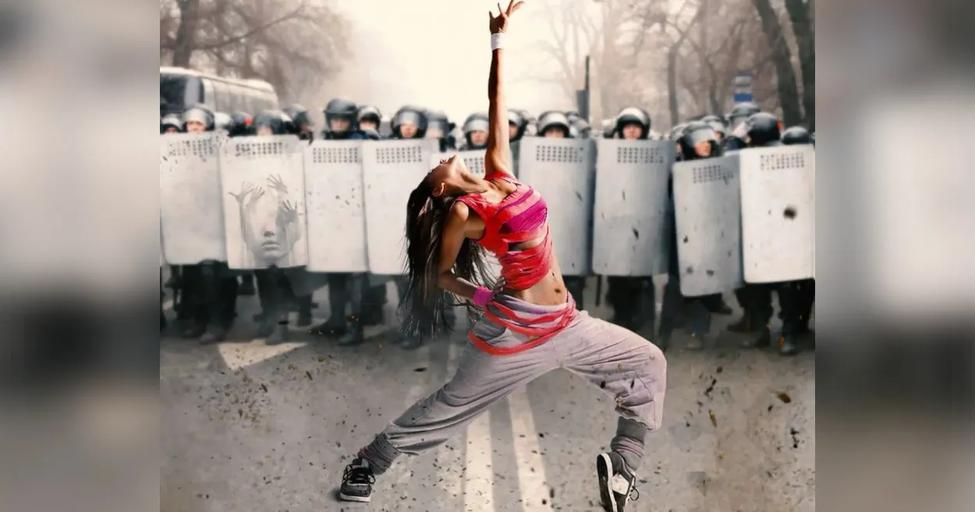
Since Iran's "Green Revolution" in 2009 at the latest, demonstrations of different scales have broken out in Iranian society almost every year. According to Wikipedia, there were more than 10 large-scale demonstrations across the country, and bloody conflicts continued.
Among them, the "Bloody November" demonstrations in 2019 were brutally suppressed by the Iranian authorities, resulting in a total of about 1,500 deaths (according to Reuters). The Iranian authorities have committed many tragedies including the infamous "Mahshahr massacre". The ongoing demonstrations, as of early December, have killed about 530 Iranians. According to Amnesty International, as of mid-November, at least 21 other protesters were arrested and sentenced to death by the government.
China's 2022 Anti-Secretization Demonstration Movement: "Blank Paper Revolution"
Unlike the "Islamic Republic of Iran" which has been in power for more than 40 years, there have been many nationwide demonstrations. Since the Chinese authorities brutally suppressed the student movement in 1989, for more than 30 years, national demonstrations have disappeared in Chinese society.
According to the "Social Blue Book" released by the Chinese Academy of Social Sciences on December 18, 2012, tens of thousands or even hundreds of thousands of "mass incidents" break out in China every year. Since the "mass incidents" - Chinese authorities deliberately avoid using the words "protest" and "demonstration" - have increased year by year, Beijing authorities have not allowed official statistics to be released since then.
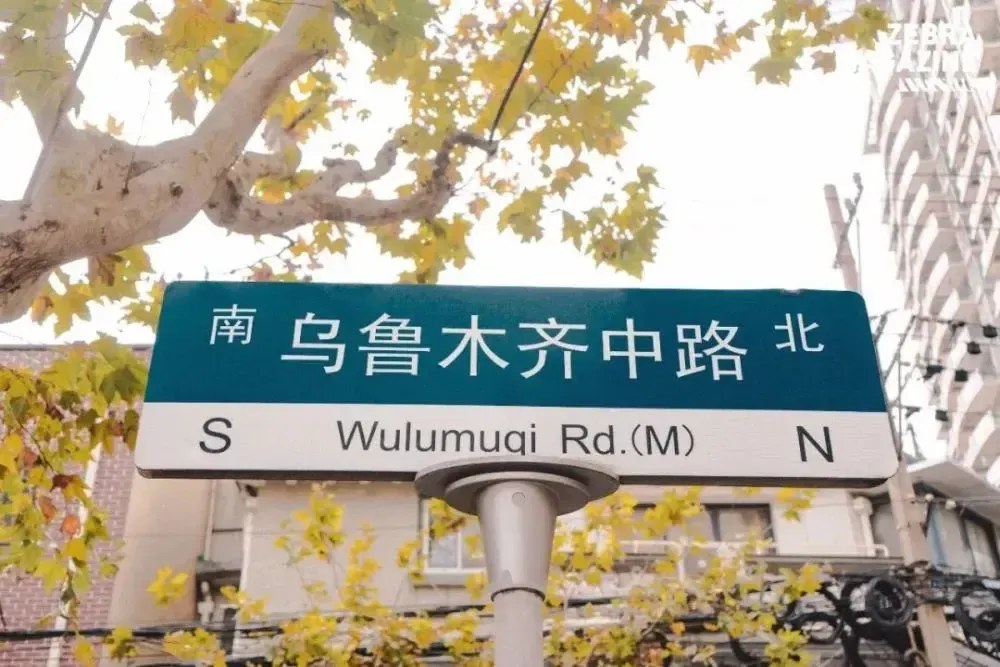
Even though there are so many protests in Chinese society, in the past 30 years, only the "blank paper revolution" has raised the demand for protests and the scale of protests to the national level.
Similar to the "anti-extradition movement" in Hong Kong and the anti-government demonstration movement in Iran, China's "white paper revolution" was also spontaneously organized by the people, and it has swept across the country in a very short period of time. But what is astounding is that just as revolutionary enthusiasm and revolutionary calls spread across the country, the demonstrations that broke out at the end of November came to an abrupt end in early December (even though there were still sporadic demonstrators, the demonstrations on a national scale suddenly disappeared).
Even the authorities in Beijing were taken by surprise by how quickly the incident subsided. This embarrassing situation cannot be simply attributed to Beijing's harsh and efficient repression. The lack of experience of the Chinese people in street protests is not a strong basis for explaining this phenomenon.
Why was the anticlimactic "blank paper revolution" so easily defeated?
The limitations of the "blank paper revolution" and the flaws of the decentralization movement
Unlike Mahsa Amini's death, which caused strong shocks in Iranian society, the Chinese government accurately identified the key demands of the "blank paper revolution".
In suppressing the protests triggered by Mahsa Amini's death, the Tehran authorities are very clear that the real demands of the Iranian people go far beyond the investigation of the tragedy itself, and the protests are not even directed at Iran's notorious "morality police." Because even though the "morality police" was announced to be abolished, the Iranians' resistance activities showed no signs of weakening, and nationwide strikes, school strikes, and market strikes were still in progress.
The purpose of the Iranians is to overthrow the "Islamic Republic of Iran" that is "theocratic and religious" and establish a democratic country. The Iranians have been fighting for decades around this political appeal.
To be precise, it is not the "Jasmine Movement" in 2011 that influenced Iranian social movements, but the "Green Revolution" in Iran in 2009 that inspired the "Jasmine Movement". The influence of social movements can be cross-infected and spread. For example, the "anti-extradition movement" in Hong Kong directly affected the student movement in Thailand from 2020 to 2021 and the anti-military coup demonstrations in Myanmar from 2021 to 2022.
The "Blank Paper Revolution" that broke out at the end of November this year seems to echo the student movement in 1989. The demonstrations seem to have some shadows of the "Anti-extradition Movement" in terms of strategy and spontaneous organization, but the "Blank Paper Revolution" It may be too optimistic to regard it as a democratic movement, and it is not appropriate.

Prior to this, resistance activities of different scales were already brewing in various parts of China. The Economist quoted the monitoring data from the China Dissent Monitor database as showing that between May 18 and November 22 this year alone, there were as many as 822 large-scale protests. Incomplete statistical data in the controlled state.
The term commonly used by the English-language media is "(anti-)lockdown protests", that is, "anti-blockade protests", which is actually very accurate. Although some progressive student groups participated and put forward radical political ideas, including "the Communist Party stepped down" and "Xi Jinping stepped down" Strict containment measures, isolation measures, nucleic acid testing and epidemic prevention code restrictions.
The strict zero-clearing policy did not strengthen social order, but revealed the chaos of governance in Chinese society: in many cities, there were strange scenes of long queues to do nucleic acid, while on the other side there were strict regulations to prevent crowds from gathering; supply and marketing cooperatives Centralized and unified allocation of materials (including grain, vegetables, and meat) has caused famine (such as in Shanghai), monopoly, price gouging, and speculation; "Volunteers" composed of social idlers and jobless people; "epidemic prevention" personnel frequently perform ridiculous actions such as nucleic acid on animals, dead people, and objects; due to strict control measures, grassroots communities and street offices, property, security The power of the anti-epidemic team composed of "volunteers" is over-expanded and out of control; the law is trampled on in the name of epidemic prevention policies; cities, streets and communities have been brutally blocked, resulting in frequent violence; medical resources have been abused and unreasonably restricted, resulting in severe humanitarian Disasters; long-term and repeated blockades have led to soaring unemployment and debt rates, a large number of small, medium and micro enterprises have gone bankrupt, and an uncountable number of people have committed suicide due to mental breakdowns; blockades of residential buildings and communities hinder fire rescue; people are not allowed to go out to evacuate during the earthquake; midnight Transshipment and isolation led to car crashes and deaths; isolation points such as shelters caused large population gatherings and large-scale infections without drug treatment...
Even though the Chinese government implements strict network monitoring and censorship, the social chaos caused by the epidemic prevention policy is still widely circulated among Chinese Internet users on platforms such as Douyin, WeChat, and Weibo, further intensifying public anger. At the same time, it should be noted that this kind of public outrage is mainly aimed at zero-clearing policies and epidemic prevention measures.
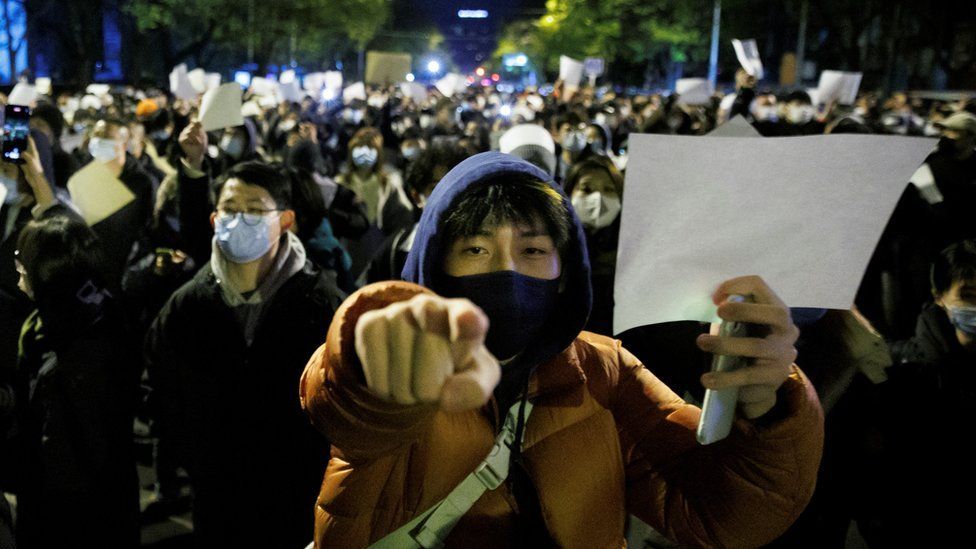
After students and young people launched the white paper protests, ordinary people of other age groups and professionals in different industries responded very little. The "White Paper Movement" is still centered on major cities and provincial capitals, while small and medium-sized cities with fewer young people or lack of colleges and universities respond even less, even though a large number of people in these places also gather on the streets to protest the blockade policy, Shock isolation facility.
Demonstrations broke out almost simultaneously in various places in a very short period of time, and their spread was also very fast. Rather than saying that severe repression quickly extinguished the momentum of the protest, it is better to say that the closure was released step by step in time to create a pressure relief valve. Among them, major colleges and universities forcibly dismissed students under the pretext of early holidays, which made the group of young people who put forward radical political opinions get paid from the bottom of the pot.
This means that ordinary Chinese people’s practical demands—that is, to release the lockdown—are much more urgent than their political demands. It is precisely because of this that after the Beijing authorities opened the pressure relief valves step by step, the people gathered on the streets gradually dispersed. In the past, only young people with clear political opinions and some students stranded in schools remained.
In contrast, the middle and lower classes of Iranian society have always been fighting around the same goal. Even though the Tehran authorities ordered a thorough investigation of the Iranian morality police that caused the Mahsa Amini tragedy, the anger of the Iranians did not subside. Trust has skyrocketed.
The demonstrations launched by Iranians around women's headscarves have risen from headscarves to women's rights, from women's rights to freedom rights, and from freedom rights to demands for democratic politics. At each stage, the Iranian government has not opened the pressure relief valve. And they scattered.
But the demonstrations in China did not rise to the level of political demands as the Chinese government quickly opened the pressure relief valve. Ordinary people who have experienced the chaos of "epidemic prevention" lack enthusiasm and confidence in seeking to change the social status quo, even if they no longer trust the Beijing authorities. In particular, most Chinese people have not experienced decades of continuous resistance movements like ordinary Iranians. Even though they also have distrust and dissatisfaction with the government, they lack the concept of political demands.
In addition, Chinese people rely heavily on mobile communication networks and the Internet to an almost outrageous level. Foreigners on the streets of China can see Chinese people bowing their heads, browsing Douyin, chatting on WeChat, and playing mobile games everywhere.
When the Tehran authorities threatened to cut off the Internet, the Iranians were not intimidated, and the will and belief to fight were deeply implanted in the hearts of ordinary people. The Chinese people are not ready, nor have they experienced it. When they are cut off from the Internet in a large area and cannot use instant messaging tools, they cannot be sure that other companions will stick to the streets like themselves, and no matter what Will stick to it.
The fragmented form of protest has caused ordinary Chinese demonstrators to lose their way, but more seriously, lose their confidence and determination.
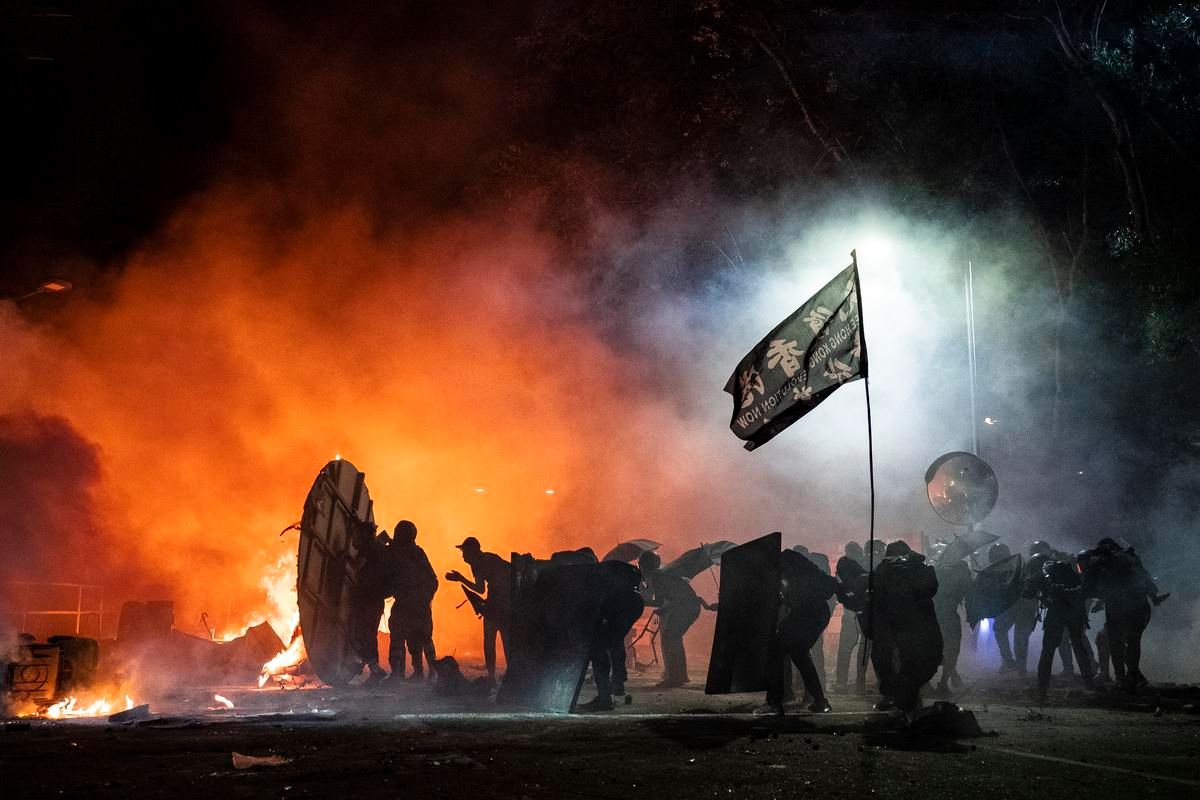
The "anti-extradition movement" in Hong Kong is known for its demonstrators having high population quality, but the high population quality alone is not enough to explain the mobilization effect of the "anti-extradition movement".
Compared with the "anti-extradition movement" in Hong Kong, although the Iranian demonstrators are rarely known for their high quality, their decades-long bloody struggle highlights their tenacious resistance rather than their civic qualities. determination and belief.
Distrust of the government and popular anger may detonate street demonstrations, but it is the determination and belief of the whole nation that keep the street demonstrations going on amid bloody suppression and white terror: they believe that they can overthrow the dictatorship and are determined to do it.
Regrettably, China's anti-blockade demonstrators have not shown the determination to go beyond their realistic demands. This means that once the realistic demands are met immediately, the demonstrators will immediately disperse.
Perhaps the Chinese people are still unaware of the inevitability and necessity of political demands, and perhaps some people still hold the idea of restoring the normal life order. One thing is unquestionable: rather than saying that they seek to change the status quo, it is better to say that they hope to restore the status quo.
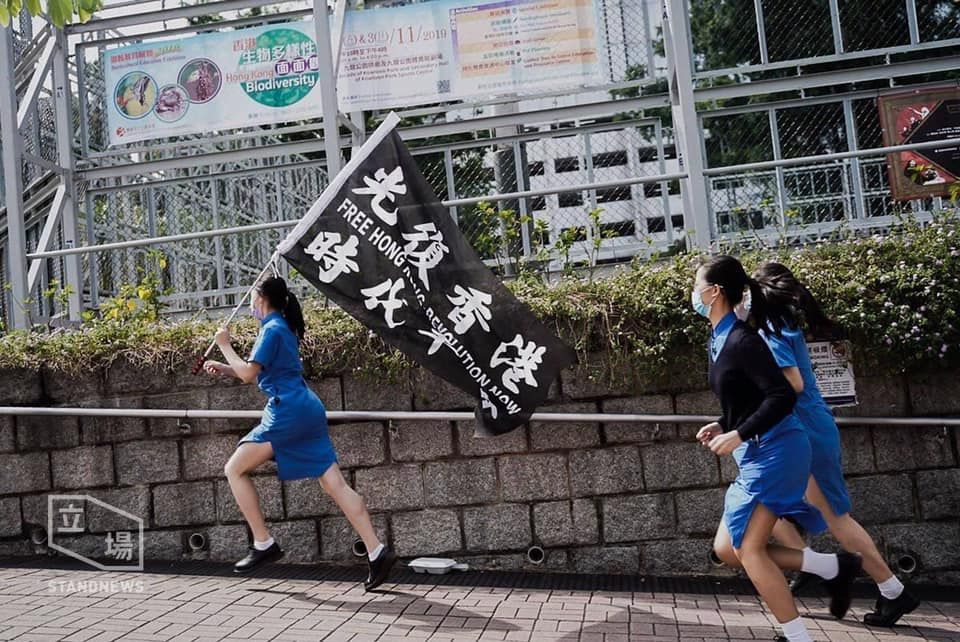
The "anti-extradition movement" known for its decentralization failed. With the promulgation of the so-called "Hong Kong version of the national security law", a large number of demonstrators and Hong Kong people who opposed the government chose to go into exile. So far, few people have understood why the movement failed. Do a thorough introspection.
When it comes to white terror and bloody suppression, Iran is not necessarily much more lenient than Hong Kong and China. The same decentralization movement, the Iranians came closer to victory than ever before, the Hong Kong people were defeated, and the demonstrators on the streets of China dispersed in an instant.
The clear and deeply rooted political demands are the fundamental driving force for generations of Iranians to overcome their fears and encourage each other, and they are the source of the determination and confidence of ordinary people.
This also shows from one side that even if there is a lack of organization, the fundamental limitation of decentralized social movements is not the lack of a center, but the lack of confidence and determination of ordinary participants. Because only in this way will they not fall apart and scatter like birds and beasts in the face of bloody suppression.
The "Tao Te Ching" said: "The people are not afraid of death, so how can they fear it?" Even if the demonstrators who are willing to sacrifice, when faced with the collapse of their companions and the receding tide, their mentality will change from "not afraid of death" to "not afraid of death". must die". In this way, the number of demonstrators staying on the streets will not increase like Iran, but will decrease like Hong Kong and China. In this way, the previous sacrifices were in vain again.
If there is considerable confidence and determination, the "blank paper revolution" will make a comeback. It is not necessary to have the experience of fighting, because confidence and determination will create experience.
When the Iranians have exceeded the limit of their tolerance for the "Islamic Republic of Iran", the Chinese have obviously not reached the limit of their tolerance for the "People's Republic of China". If you really endured to the limit, the turbulent public opinion on the streets would not disappear in an instant just because the government secretly opened the pressure relief valve.
The price of the decentralized social movement is huge. Inspired by a kind of blind optimism that was dazzled by revolutionary romanticism, after the decentralized social movement was promoted to the altar, it did not take time to think about how to overcome it. Centralization flaws.
Decentralized social movements have never been successful, at least so far. As for whether it will be successful, it remains to continue to improve the sports mode in the future. Before it is successful, it is not appropriate to praise this sports model too much.
The Iranian model embodied by the Iranians in this year's large-scale anti-government demonstrations is obviously another outstanding transcendence of the "anti-extradition model" in Hong Kong.
references:
- Iran Wire. 2022. "Iran's Unprecedented 2022 Protests: 15 Key Differences from Past Unrest." Oct 9, 2022. Accessed on Dec 8, 2022. https://iranwire.com/en/politics/108420-irans-2022-protests -15-key-differences-from-past-unrest/
- Amnesty International. 2022. "Iran: Chilling use of the death penalty to further brutally quell popular uprising." Nov 16, 2022. Accessed on Dec 8, 2022. https://www.amnesty.org/en/latest/news/ 2022/11/iran-chilling-use-of-the-death-penalty-to-further-brutally-quell-popular-upprising/
- Oliver Holmes. 2022. "Iran enters 'critical' phase as it tries to quash anti-regime protests." Nov 22, 2022. Accessed on Dec 8, 2022. https://www.theguardian.com/world/2022/nov /22/iran-enters-critical-phase-as-it-tries-to-quash-anti-regime-protests
- CNN. 2022. "China's lockdown protests: What you need to know." Nov 29. 2022. Accessed on Dec 8, 2022. https://edition.cnn.com/2022/11/28/china/china-lockdown- protests-covid-explainer-intl-hnk/index.html
- Jedidajah Otte and Clea Skopeliti. 2022. "'People want to live': views from China on the Covid lockdown protests." Nov 20, 2022. Accessed on Dec 8, 2022. https://www.theguardian.com/world/ 2022/nov/30/people-want-to-live-views-from-china-on-the-covid-lockdown-protests
- The Economist. 2022. "How common are protests in China?" Nov 16, 2022. Updated Nov 28, 2022. Accessed on Dec 8, 2022. https://www.economist.com/graphic-detail/2022/11/ 16/how-common-are-protests-in-china?utm_medium=cpc.adword.pd&utm_source=google&ppccampaignID=18156330227&ppcadID=&utm_campaign=a.22brand_pmax&utm_content=conversion.direct-response.anonymous&gclid=Cj0KCQiAkMGcBhCSARIsAIW6d0Cyc7KIbQSzDYkh3IGyAzwyD_ijEUfjELyuUE3TnbFSftIf7W_0Yy4aAqMGEALw_wcB&gclsrc=aw.ds
- Al Jazeera. 2022. "How are the Iranian protests different from previous protests?" Oct 27, 2022. Accessed on Dec 8, 2022. https://chinese.aljazeera.net/news/political/2022/10/27/Iran How the protest is different from previous protests
- Li Peilin, Chen Guangjin, etc. 2012. Analysis and Forecast of China's Social Situation in 2013 (Social Blue Book). Beijing: Social Science Literature Publishing House. https://www.pishu.com.cn/skwx_ps/bookdetail?SiteID=14&ID=1699336
请支持独立研究者,谢谢!
Comment…